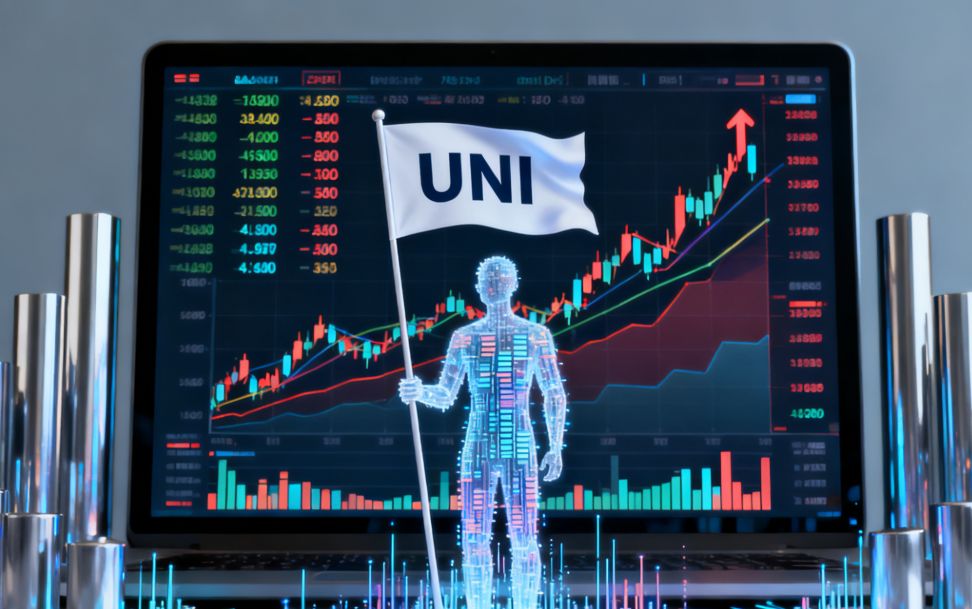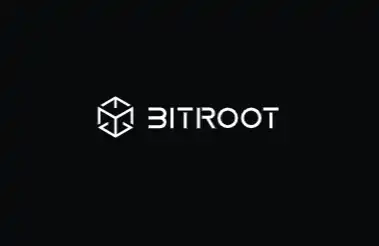The Essence of Bitcoin and AI
Liberalism gives vitality to Bitcoin; democratization gives it scale. The network effect is the invisible bridge connecting the two, and also proves that freedom grows through participation.
Liberalism gives bitcoin its vitality; democratization gives it scale. Network effects are the invisible bridge connecting the two, and they prove that freedom grows through participation.
Written by: Jordi Visser
The author is a professional investor with over 30 years of experience in traditional finance and macroeconomics on Wall Street.
When I lived in Brazil, I attended the wedding of the daughter of the driver my family used every day. In Brazil, drivers are not just a means of transportation; they are guardians, often an extension of the family, a safe haven in a turbulent world. The wedding was held fifteen minutes outside São Paulo, one of the largest cities in the world. At the reception, a plane flew overhead, and a little boy tugged at my sleeve, asking if I had ever been on a plane. He kept asking questions, eventually asking if I had ever been to the big city of São Paulo. His world was just a few miles away from ours. That moment has stayed with me ever since. It revealed that the gap in opportunity can coexist with geographical proximity; the difference between developed and developing countries is not about wealth, but about access to opportunity.
Earlier last week, I was reminded of that boy when I heard Peter Thiel’s remarks again. These comments were first made in 2024, when bitcoin was trading at around $60,000. Thiel said, “I’m not sure it will go up much from here.” He also reflected, “The founding idea of bitcoin was as a libertarian, anti-central government mechanism... That was what initially excited me. However, it doesn’t seem to have worked out exactly as intended.” After a long period of consolidation for bitcoin, these words carry more weight. In Thiel’s view, this once rebellious asset has become institutionalized, traded via ETFs (sorry, should be ETPs), accepted by governments, and absorbed into the mainstream financial system. But what he sees as the end of the story may only be the middle. For billions still excluded from stable finance or fair opportunity, bitcoin’s use case has changed: from a libertarian exit tool to a democratizing entry tool, becoming a bridge to global capitalism rather than an escape from it.
Thiel’s remarks also symbolize a deeper shift beneath the surface—a quiet transfer of power. As I wrote in “Bitcoin’s Silent IPO,” the current consolidation is not a failure but a liquidity event. The early believers, cypherpunks, miners, and investors who propelled bitcoin from obscurity to legitimacy are now finally reaping the rewards of their conviction. They are selling bitcoin not out of fear, but out of a sense of accomplishment. Thiel’s comments perfectly capture this transition: the libertarian founders who built the system are now stepping back, handing over ownership to the institutions and individuals who will carry it forward. Ideological differences or opportunity costs are irrelevant. They are moving on. Just as an IPO distributes company shares to a broader audience, this stage distributes bitcoin ownership to global users. This is the process by which an idea born of rebellion begins to stabilize, and the moment when freedom transforms into infrastructure.
From Liberty to Accessibility
Liberalism and democratization both center on freedom, but their meanings are fundamentally different. Liberalism is freedom from control; democratization is freedom to participate. The early creators of the internet and cryptocurrencies were essentially libertarians—visionary pioneers dedicated to breaking information gatekeepers and decentralizing power. Yet most of them were well-educated insiders, privileged and well-resourced enough to opt out of traditional systems. They sought sovereignty, not inclusion. Today’s challenge is how to extend that freedom to those lacking the tools, education, or infrastructure. Democratization is the process by which freedom becomes accessible.
The “Crypto Anarchist Manifesto” and the Hardest Frontier
Long before bitcoin, Satoshi Nakamoto, and the white paper, Timothy C. May’s “Crypto Anarchist Manifesto” (1988) captured the early libertarians’ dream of digital autonomy. May envisioned that it would be cryptography, not politics, that could liberate individuals from institutional control. He predicted a future where people could communicate and transact anonymously, and states would be powerless to regulate or tax the flow of information. “These developments,” he wrote, “will fundamentally alter the nature of government regulation, the ability to tax and control economic interactions.” In later writings, May warned that money would be the hardest frontier for liberation. He said governments could tolerate encrypted speech, but not commerce they couldn’t tax or track. “Anonymous digital cash is the most dangerous application of cryptography.” Two decades later, bitcoin achieved what he thought nearly impossible: the separation of money from the state through mathematics.
But May’s manifesto was not an isolated event; it was part of a broader trend in early internet development. The internet also began with a kind of anarchy: open protocols, anonymous forums, unregulated peer-to-peer information exchange. For a time, it embodied the same libertarian spirit: information is freedom, code is law. Yet even this digital anarchy evolved. To democratize access to information, it needed usability, security, and trust. The chaos of the original web was gradually replaced by search engines, browsers, and standards that enabled billions to access the internet. Today, bitcoin and artificial intelligence are at a similar inflection point. If bitcoin represents the liberation of capital, AI represents the liberation of knowledge. Both stem from the same anarchist DNA but are evolving toward a more inclusive future: transforming tools of personal sovereignty into platforms for collective empowerment.
From the Spark of Liberalism to the Blaze of Democratization
Every great technological revolution begins with the spark of liberalism and matures through democratization. The printing press freed information from the church; the American Revolution freed citizens from monarchy; the early internet freed communication from centralized media monopolies; bitcoin freed money from intermediaries. Yet in each case, the earliest beneficiaries were a well-educated minority. True democratization only occurs when tools become simple, affordable, and universally accessible.
Liberals build the gates; democratizers distribute the keys. The bitcoin white paper promised to remove gatekeepers, while AI promises to break down intellectual and institutional barriers. Both began as libertarian quests for sovereignty, but only as inclusive tools can they reach their full potential. The challenge for the future is to ensure that this cycle—innovation, consolidation, rebellion, democratization—does not ultimately become a new power grab, but results in lasting empowerment.
Bridging Technologies: Scalable Compromises
No revolution is possible without compromise. In crypto, stablecoins—the digital dollars connecting the decentralized and traditional worlds—are precisely this bridge. To purists, stablecoins are heresy, tying blockchain technology to government money. Yet for billions, stablecoins are the easiest way to access the global financial system. Stablecoins are to crypto what HTTP and SSL were to the early internet: the practical layers that make complex systems usable and trustworthy.
The same dynamic played out in the 1990s. Early internet libertarians dreamed of an unregulated digital commons, but it was companies like AOL, Netscape, Amazon, and later Google, Apple, Meta—commercial intermediaries scorned by purists—that enabled ordinary people to access the internet. The real breakthrough was not ideological, but technological. Secure Sockets Layer (SSL) encryption allowed credit cards and personal data to be transmitted safely online, opening the door to e-commerce. Compromise is how freedom scales. Stablecoins and user-friendly exchanges play the same role for crypto: they are imperfect bridges that turn ideals into actual participation.
Mass Adoption as the Engine of Democratization
Every major technology begins in rebellion but fulfills its promise through mass adoption. As Marc Andreessen said, “Innovation that can’t scale is just a hobby.” The goal is not just to build systems that resist control, but to build systems that benefit the masses. Chris Dixon of Andreessen Horowitz insightfully noted, “The next big thing will start out looking like a toy.” True transformation happens when toys become tools, when the ideals of the few evolve into infrastructure for the many. The internet, mobile phones, cloud computing, and now bitcoin all follow this trajectory. They all began with the energy of liberalism—open, permissionless, decentralized—but only when they became usable, trustworthy, and accessible did they truly democratize. This is not a binary choice between anarchy and control, but a continuum. To benefit eight billion people, technology must move from ideology to inclusion, from resisting the system to upgrading it.
Democratizing Education: The True Libertarian Freedom
If the highest ideal of liberalism is personal sovereignty, then democratizing education is its purest expression. True freedom is not just freedom from control, but the freedom to understand, create, and participate. Artificial intelligence continues the idea that gave birth to bitcoin: decentralizing power through code. Bitcoin broke the banks’ monopoly on capital, and AI is breaking institutions’ monopoly on knowledge.
About six years ago, I spent an afternoon with Michael Milken discussing the future. Something he said has lingered in my mind as I reflect on bitcoin and foundational concepts. At the time, I was arguing that the dollar would eventually depreciate, and he interrupted me: “Don’t think about it from the perspective of the dollar possibly disappearing, based on what you read in economic history books. Think about what it represents.” He told me that if you opened America’s doors tomorrow and let everyone in, seven billion people would line up. His point was simple yet profound: the dollar is not just a currency; it symbolizes opportunity, resources, and a belief in education and mobility. That conversation was an epiphany for me, reminding me of my days in Brazil and the boy at the wedding who had never been to São Paulo. He was not lacking in intelligence, but in opportunity. As Milken often says, “Intelligence is evenly distributed, but opportunity is not.”
An equal future will not come from redistributing wealth, but from expanding access to capability. Bitcoin gives people the freedom to participate in capitalism without permission. AI can do the same for education and entrepreneurship. Together, they push us toward the kind of freedom Milken described—a freedom not built on wealth, but on the opportunity for everyone to learn, create, and belong.
A New Definition of Upside
Peter Thiel may be right that bitcoin’s price upside is limited, but its benefit to humanity is just beginning. The same is true for AI. Early libertarian developers created systems for those who wanted to opt out. The next generation is building systems that allow everyone to opt in. The original rebellion is evolving into inclusion.
Liberalism gives bitcoin its vitality; democratization gives it scale. Network effects are the invisible bridge connecting the two, and they prove that freedom grows through participation.
For the boy living outside São Paulo, who had never been on a plane or even seen the city just fifteen minutes away, the true value of bitcoin and AI is not theoretical. It opens a door to a new world, where distance no longer determines possibility, knowledge and capital can flow without borders, and the greatest hope of technology is not to escape the system, but to integrate into it. That is why I call bitcoin the purest AI investment.
Disclaimer: The content of this article solely reflects the author's opinion and does not represent the platform in any capacity. This article is not intended to serve as a reference for making investment decisions.
You may also like
[English Long Tweet] When Payments Become Machine Language: The Economic and Technical Logic Behind x402x

Can the Fusaka upgrade open a new chapter for Ethereum scaling?

In-depth Analysis of Bitroot Parallelized EVM Technology: High-Performance Blockchain Architecture Design and Implementation
Bitroot's success lies not only in technological innovation, but also in transforming these innovations into practical engineering solutions.

